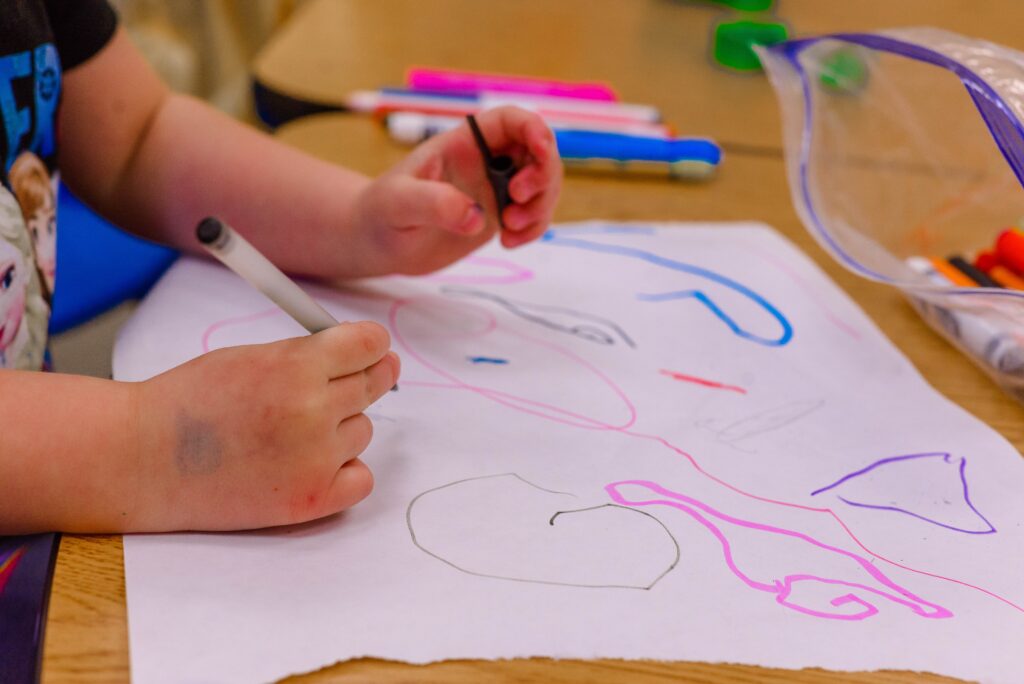
Why you need to regulate your emotions.
Table of Contents
What is emotional regulation?
Emotional regulation is the ability to acknowledge what you are feeling and identify appropriate tools to process the emotion. The ability to regulate your emotions is one of the most important tools for you and for you to teach to your kids.

Have you found yourself saying:
- “Well, that was a bigger reaction than necessary.”
- “Why did I yell over something so small?”
- “I get so mad and then I can’t calm down.”
- “I am crying for absolutely no reason.”
If you cannot identify what you are feeling, then a lot of your life will be reacting to situations and not understanding why you have the response that you do. It also means that your reactions to situations will likely be disproportionate to the situation.
Kids who do not learn emotional regulation skills tend to have more anger outbursts and meltdowns.
Learning to regulate your emotions.

It all starts with awareness and understanding. Most of the time, it is easier to identify the physical feelings instead of trying to figure out the emotion first. Emotions will generate physical feelings in your body like a tight chest, an upset stomach, or tears welling up in your eyes.
I absolutely love this emotion wheel because it is packed full of physical sensations that often accompany the emotion you are feeling. Identify the physical sensation, then move to the inner circle to identify what emotion matches what you are feeling.
Print this off, carry it around with you and check in with yourself several times a day for the next 30 days. Repetition is important. The more you practice this the more it will become a habit.
Tools to regulate your emotions.

For kids:
Create a cozy corner where they can go when they are feeling big emotions. The cozy corner needs to be a safe place for your kid with some of his/her favorite stuffed animals and some calming activities, like coloring.
Print off a feelings chart to add to the cozy corner. When you notice your kid is having an emotional response, direct them the chart and coach through “I and feeling ___ because ___.” Remember, name the emotion to tame the emotion.
Create a toolbox of activities. There are tons of printable grounding skill cards for kids, like these. Print them off, several copies, and laminate them. Put one copy in the cozy corner, one in your bag for on the go, and take one to the babysitter.
Coach your kid through the grounding skills and help them to identify which ones seem to help them regulate. When your kid becomes unregulated, direct them to the grounding tools.
For adults:
Crazy enough, the tools for adults are not much different from the tools for kids.
You also need to take a break and have a safe place to go when you have big emotional responses.
Find the tools that work best for you. Again, you can also use several of the tools that you teach your kid. A few options are:

- Deep breathing
- Take a walk
- Journal
- Draw your emotions
- Meditate
- Take a bath
- Listen to music
- Ask for a hug
- Read a book
Practice “I am feeling ___ because ___.” Name your emotion and identify what caused that emotional response.
If you can do something about the situation, then do it. Talk to your spouse about potential triggers, walk through the park instead of the busy city streets, tidy up your living space.
Emotional awareness helps you to recognize what you need. Emotions are our traffic signals. They alert us about something. Ignoring those signals can create challenges in your relationships, it can impair sleep, and may cause emotional explosions if the emotions are suppressed over time.
